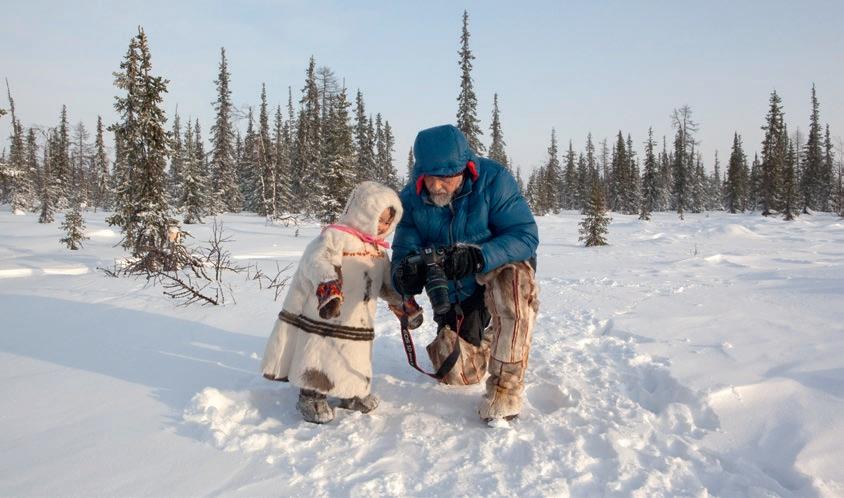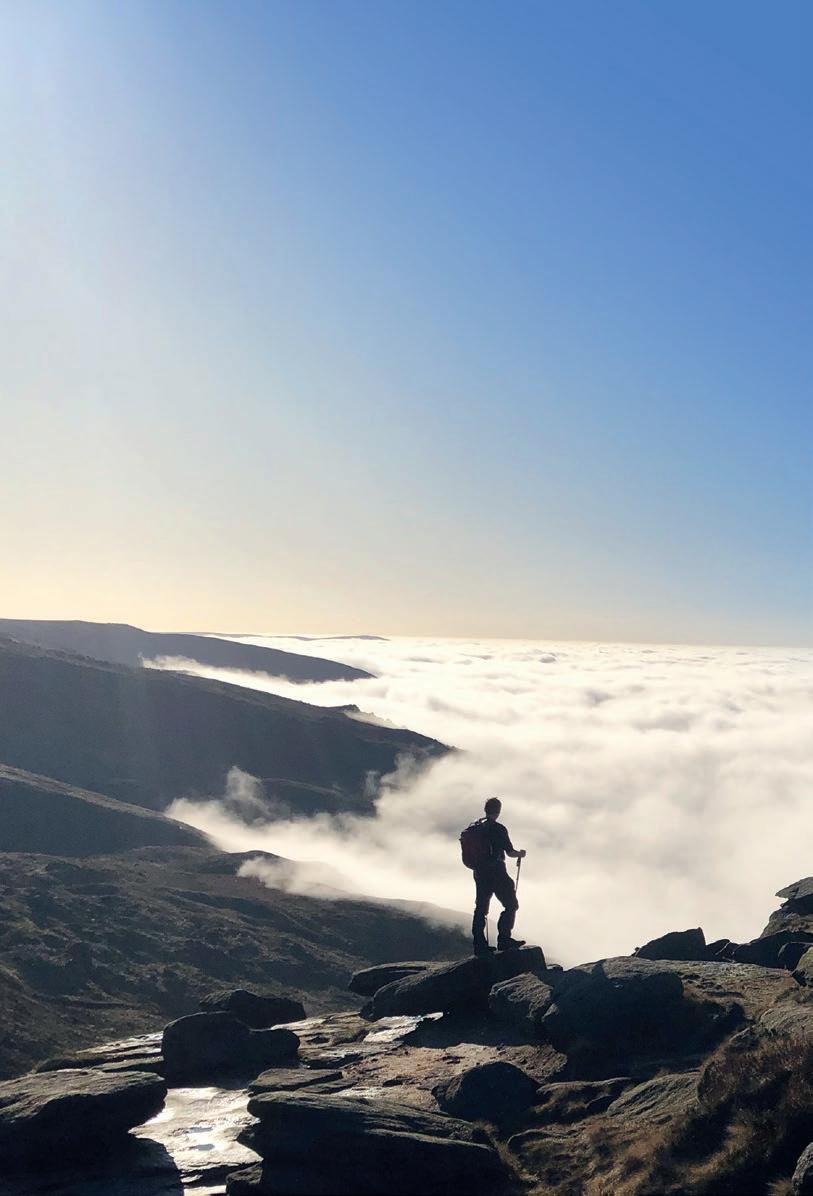
5 minute read
Return of the sun
RETURN OF THE
SUN
As the year’s first rays of sunshine touched the ground, giggling children would be almost tripping over each other as they ran from home to home. The race was on to blow out the seal oil lamps. Each householder must then light a new wick, traditionally made from moss or Arctic cottongrass. Extinguishing the only source of heat and light wasn’t a trifling thing. This ritual of the Inuit people of Canada’s Eastern Arctic, disappeared after the arrival of electricity. After that, light and heat came with the mere flick of a switch. However, it remains a powerful metaphor for the turning of the year and the reappearance of the sun. It also symbolises a fresh start, a new beginning.
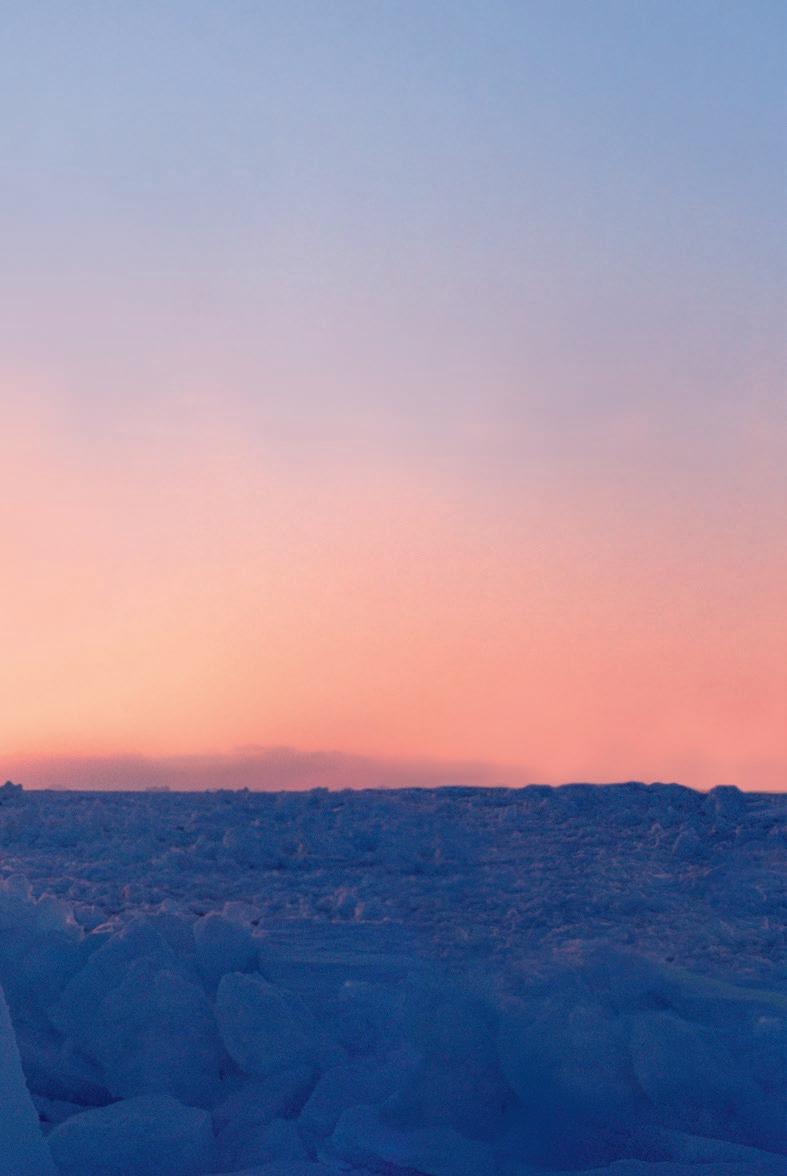
The reappearance of the sun each year remains an important annual event in many Arctic communities. Nowhere is it more significant than in the Avanersuaq region of northwest Greenland. Avanersuaq in Greenlandic means ‘faraway land’, an apt name for an area that is only 800 miles from the North Pole. It is home to a group of people who call themselves the ‘Inughuit’ which means ‘proud great people’. Theirs is the most northerly indigenous community in the world. Each year on 17 February, people in the small town of Qaanaaq climb the hill behind the settlement to try and catch their first glimpse of the sun at midday. Then the celebrations begin, with traditional sports and games.
There is joy in feeling the warmth come to the great world and seeing the sun follow its old footprints in the summer night Poem by: Tatilgak
Image captions:
Previous page. Jens, an Inughuit hunter, stands on a piece of broken ice to work out his route in Melville Bay, N.W. Greenland. 1. A hunter and his dog team at the floe edge, silhouetted against sea-smoke at -30⁰C, N.W. Greenland. 2. Aerial view of the Inughuit village of Savissivik in winter, N.W. Greenland. 3. View of a hunter and dog sled from a cave inside an iceberg, N.W. Greenland.
The 23 degree tilt of the earth’s axis means that in this area of Greenland the sun doesn’t appear above the horizon between late October and mid-February. Almost four months of darkness and twilight. So it’s not surprising that the day the sun returns is such an important day in the Inughuit calendar. And even though the coldest days are still to come, and initially there are only a few minutes when the sun is visible, it offers a huge psychological lift. The promise of warmth, midnight sun, summer flowers, extended hunting grounds and social gatherings. Light, rebirth and possibility. The days without a moon are very dark, but despite this, the hunting life goes on throughout the winter. The Inughuit fish through holes in the ice for halibut, and travel across the frozen sea by moonlight to hunt seals at their breathing holes. They are helped greatly by the keen noses of their dogs that can smell the fishy breath of seals from a great distance. This is life in the raw.
1

2
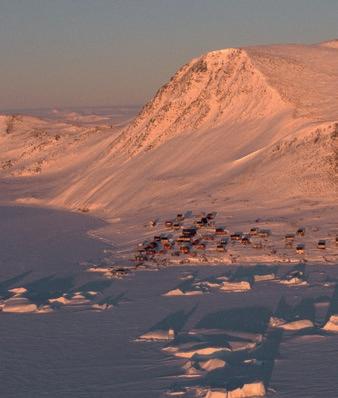

We should bear in mind that the harshness of their environment is a relative concept we bring from pampered western lives. To the Inughuit it is their home, and this is simply how life is. To outsiders their resilience and patience can seem almost superhuman. Yet what unlocked this ‘Faraway Land’ was the invention of such a small thing. The sewing needle was probably developed over 100,000 years ago. This allowed the Inughuit’s ancestors to make the warm and windproof skin clothing necessary to survive in this vast icy wilderness. If we need a reminder of human resilience in troubled times, looking to the Inughuit is a great idea. Their resourcefulness seems almost unlimited and they have learned over many generations not to worry about the things they cannot change.
Bryan Alexander
Photographer
At - 50°C in polar bear country the last thing you want to worry about is your trousers.
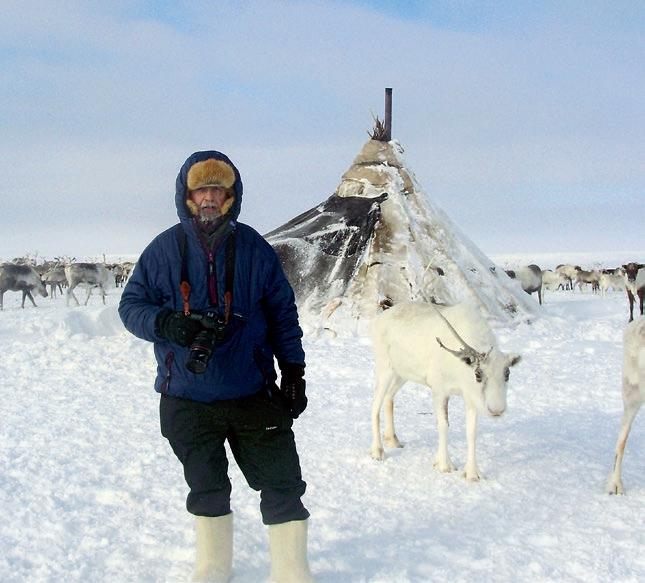
ArcticPhoto
All images used are from Bryan and Cherry Alexander’s image library. Frequent visits to Siberia, Greenland, Alaska, Canada, Arctic Scandinavia and Antarctica have created a unique collection of pictures of the polar regions. To view these amazing galleries please visit arcticphoto.com To see a visually stunning record of Bryan and Cherry Alexander’s work, take a look at their book ‘Forty Below: Traditional Life in the Arctic’ arcticapublishing.com
Bryan Alexander has been a long-time friend of Rohan and next year will mark his 50th consecutive year of photographing in the Arctic – a remarkable achievement in itself. He made it back to his home in the Scottish Highlands just prior to the lockdown. He had been working in Siberia – in a remote area with no virus, no internet and no crisis. His work documents the extraordinary beauty of the Arctic and its peoples, together with the changes to communities and landscape.
To get the perfect shot he has sat for hours on sea ice, waiting alongside Inuit hunters for a sight of their quarry. He’s driven reindeer with Nenets herders in Western Siberia and kept Cree trappers company while they checked their trap lines in Northern Quebec. “I could say that my Winter Bags have done everything with me in the Arctic, except let me down. Only twice have they given me cause for concern; once when a large bonfire spark tried to set them alight and once when I heard they were being discontinued. The latter event possibly caused more of a commotion and prompted me to order several pairs! Given how well they wear, that should last me for many years to come. I have worn them every day and slept in them at night for an entire month, and after a good wash, they look great again. Photography in Arctic conditions presents an abundance of technical problems. Working outside in winds of over seventy miles per hour and temperatures below -50°C, it can feel like nature is really testing you. Having gear you can fully depend upon in these conditions isn’t a luxury, it’s a necessity.” “Rohan works for me because it simply does the job. The last thing I need to be worrying about is my clothing.”
